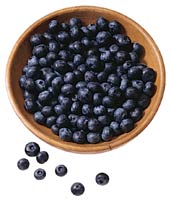#1 Womans Question- “Why Low Calorie Diets Will Make You Fat”
Written by: Flavia_DelMonte
Science shows that diets that restrict calories can actually make it harder to lose fat and keep it off. Learn how to stop the never-ending struggle with stubborn fat.
 Being a woman is tougher than ever with all the hype and “1 strange weight loss tip” on the market. Celebrity diets have populated the magazines; even gaining favor in television shows. Horrible!
Being a woman is tougher than ever with all the hype and “1 strange weight loss tip” on the market. Celebrity diets have populated the magazines; even gaining favor in television shows. Horrible!
Low calorie diets rave how “normal” people like you and me can look just like celebrities. But do you really want to be starved of nutrients, while your hormones are completely unbalanced, causing feelings of helplessness and depression?
“Everything in moderation.”
Ever hear that one? Although there is some weak truth to that, eating everything in moderation will keep you overweight!
Women all over the world are suffering from eating disorders who are clearly unaware of having one. If you’re skipping meals or eating very little in order to lose weight….STOP!!
These actions will only make you pack on the pounds, sometimes at rapid rates.
FACT
Eating less than your body requires will slow your metabolism, making weight loss impossible and will negatively affect your health.
As you have heard, breakfast is the most important meal of the day, and yet many people still confess to eating only a piece of fruit for breakfast.
THE SCIENCE
Food is used for energy, cell structure, regulating hormones and chemical reactions. Food takes one of three directions upon ingestion: energy use, storage, or excretion.
The body receives energy from carbohydrates, fats, and proteins. If our stores of carbohydrates and fats are in short supply, our body will turn to muscle for breakdown of amino acids (stored proteins) for energy, causing muscle atrophy.
Let’s Not Be Mean But Who Looks Better? Higher Calorie Girl or Lower Calorie Girl?
LOW CALORIES = MUSCLE WASTING
Low Carbohydrate diets deplete the liver and muscle of energy, which causes muscle wasting, lack of energy, and will compromise your health.
Low Calorie diets, while reducing body weight (usually for a short period of time), will ultimately poorly affect your health and in most cases will have a rebound effect.
Low calories will reduce muscle mass and strength.
When nutrient intake is low, the metabolic rate will become low for three reasons: Decreased thyroid function, reduced thermic effect of eating and reduction in muscle mass.
While reductions in muscle mass causes a lack of endurance (especially during exercise), in turn will lead to osteoporosis and lack of independence as you age.
The Worst Part: FAT STORAGE
Fat storage is the largest form of storage in the body. Low calorie diets, and long waits in between meals, signal the body that starvation is occurring. With this signaling, the body will turn on the storage mode.
Eating every 2-4 hours has been researched to show a positive effect on body composition and overall heath. Frequent eating boosts metabolism, regulates blood sugars and maintains muscle mass. Expert Nutritionists believe obesity occurs from a lack of nutrients in diets. Hunger never subsides as the body is signaling for nutrition to be ingested. We are seeing vitamin deficiency diseases come back that haven’t been around for decades.
Your body doesn’t understand what to do with processed foods. Diets high in sugar, sodium and processed foods do not seem to signal the body of being full and therefore leads to hunger.
EATING TOO LITTLE IS WEIGHT LOSS SUICIDE
Eating fewer calories than body requirement will deprive your body of essential nutrients that will poorly influence your health.
#1 Womans Question- “Why Low Calorie Diets Will Make You Fat” Read More »

 Remember, if you don’t have junk around the house, you’re less likely to eat junk! If all you have is healthy nutritious foods around the house, you’re forced to make smart choices. Basically, it all starts with making smart choices and avoiding temptations when you make your grocery store trip. Now these are just some of my personal preferences, but perhaps they will give you some good ideas that you’ll enjoy.
Remember, if you don’t have junk around the house, you’re less likely to eat junk! If all you have is healthy nutritious foods around the house, you’re forced to make smart choices. Basically, it all starts with making smart choices and avoiding temptations when you make your grocery store trip. Now these are just some of my personal preferences, but perhaps they will give you some good ideas that you’ll enjoy. Quinoa is a gluten free grain that contains double the protein of brown rice along with greater fiber content and a lower glycemic load.
Quinoa is a gluten free grain that contains double the protein of brown rice along with greater fiber content and a lower glycemic load.
 Truthfully, I’m not against beef or ground beef for that matter, but if you’re looking for a leaner, more nutritious alternative to beef (especially for those Protein and Carb meals), look no further than Bison (buffalo).
Truthfully, I’m not against beef or ground beef for that matter, but if you’re looking for a leaner, more nutritious alternative to beef (especially for those Protein and Carb meals), look no further than Bison (buffalo).